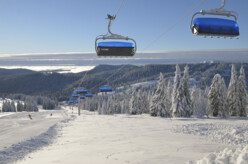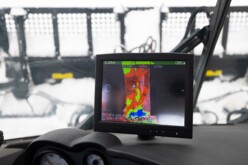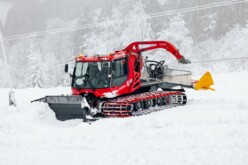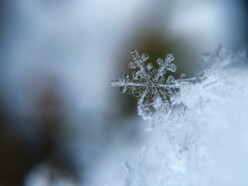Sustainability
We attach great importance to sustainable, energy- & resource-saving skiing operations in the Feldberg ski area.

100% green electricity from domestic hydropower | EOW
All lifts and snow-making equipment in the Feldberg ski area are operated with 100% certified green electricity.This comes 100% from renewable sources, mainly from hydropower in the region. Our provider is the Energieversorgung Oberes Wiesental (EOW), based in Todtnau. Instead of full continuous operation of all lifts, some lifts can be taken out of operation at times of low demand without any restrictions on the number of slopes. In addition, the speed of the lifts can be reduced. Instead of 3 minutes, the chairlift at Seebuck then takes five minutes, for example.

Resource-saving slope preparation
All snow groomers in the Feldberg ski area are equipped with the Snowsat digital snow management system. This significantly reduces the amount of energy used for snowmaking and slope preparation. The system uses high-precision satellite technology that makes it possible to measure the snow depth not only under the vehicle, but also on the snow blade of the snow groomer or up to 50 meters in front of the vehicle. This ensures even distribution of the snow and allows snowmaking to be carried out in the most resource-conserving way possible.

100% bio-fuel (HVO diesel)
The snow groomers have been fueled with HVO biodiesel since the 22/23 season. According to the manufacturer, the CO2 savings through the use of HVO diesel are around 90 percent compared to conventional diesel. In addition, this fuel is more environmentally friendly, so hardly any particulate matter is produced. The Feldbergbahnen hope that the use of HVO diesel will contribute to ecologically sustainable management in and with nature.

Snowmaking
For lift operators, but also for guests, technical snowmaking represents a kind of insurance for skiing operations. Only if it is possible to open slopes as predictably as possible can the facilities be operated economically and not tempt guests to travel many kilometers further abroad to ski there - because a large proportion of the energy is generated by traveling there in their own vehicles. Technical snowmaking is therefore not an end in itself, but serves to ensure a safe and high-quality winter sports experience. At Feldberg, we only make snow on one third of the total slope area. For this, we have an energy requirement during the entire winter season that is roughly equivalent to a round-trip flight for 200 passengers from Munich to Mallorca. On the other hand, we groom our slopes for around 300,000 guests per season, most of whom come from the surrounding area.

Technical snow
Technical snowmaking uses water from nature for one winter. With the melting of the snow, it returns to the natural cycle. The term "artificial snow" is misleading, but persists in reporting. No chemical or biotechnical substances or other additives are used. Whether natural snow or technical snow - it consists exclusively of the elements water and air. In Germany, additives are generally prohibited. So the difference is only in the mechanical production. And here, external conditions play an important role: For example, the air temperature should be colder than -3 degrees, the humidity should be lower than 80 percent, and the water temperature should be colder than +2 degrees.